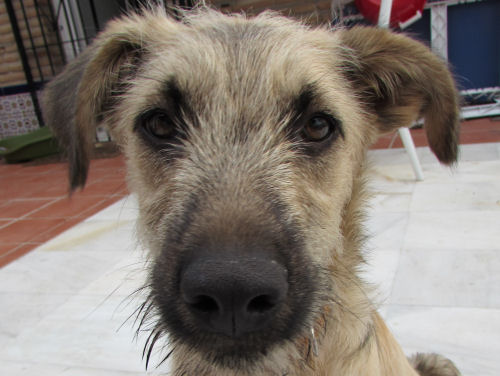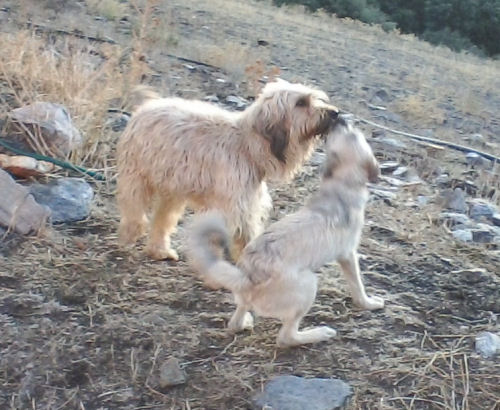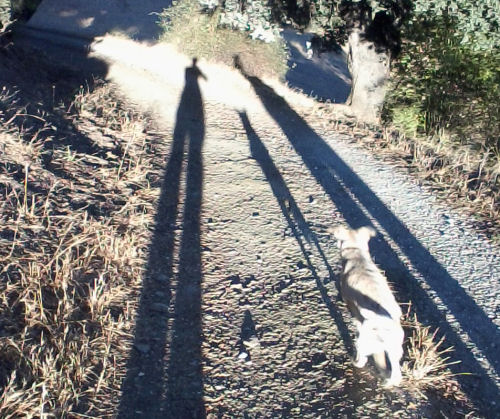At last we have got a dog – not because we ever reached a successful conclusion in the constant “Dog or no dog” debate – but just because a gorgeous puppy crossed our paths. After taking her out for a walk, removing 80 ticks from her and a week’s trial, we decided to adopt her. Her father is a shepherd dog and occasionally we meet the shepherd who takes her out on her next sheep/goat herding lesson. She’s enthusiastic but basically afraid of goats unless they are safely behind a fence.
The idea behind this blog is to keep a track of all the vaccinations and illnesses Shep has had so that in the future I will know what to do.
HISTORY:
Shep was originally christened “Lola” and thanks to the shepherd’s children, she loves being with people. They used to dress her up in dolls’ clothes and push her around in a pushchair. Her next owner was going to call her “Pastora” (Spanish for shepheress) so we decided on an English alternative.
She is quite patient and reasonably mature and is excited to see someone she knows: she does these vertical jumps which can be mistaken for “jumping up” but she does also jump up at people she does/doesn’t know.
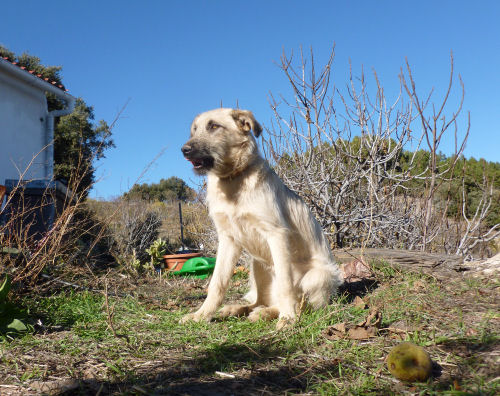 TICKS
TICKS
The first job was to remove the ticks as she was covered with them. Most of them didn’t bother her but there were some between her toes which she had scratched raw. There seems to be a lot of advice how to remove ticks but I found the best way was with a pair of tweezers, making sure you were as close to the skin as possible and pulling gently until the tick came out. I then put them into a jar half filled with alcohol to make sure that they were well and truly dead before throwing away.
VACCINES
The first vaccine Shep was given was against Distemper/Parvovirus and this should be administered within 45 days of birth. When the puppy is 9 weeks old, they are given the second Distemper/Parvovirus/Leptospirosis/Adenovirus jab. When the puppy is 12 weeks old, they are given the third Distemper/Parvovirus/Leprospirosis/Adenovirus vaccine. This should then be repeated annually.
When the puppy is 4 months old, they are given their first rabies vaccine and then another 4 weeks later. The rabies vaccine is then repeated each year.
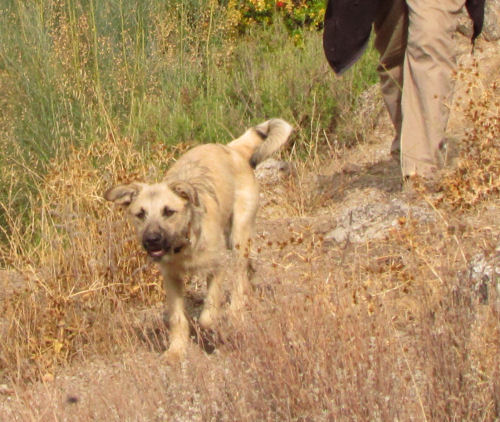 OTHER ILLNESSES
OTHER ILLNESSES
After staying at a kennel, Shep developed KENNEL COUGH (tos perrera). This is not contagious for humans, only for other dogs. The symptoms were a slight cough and runny eyes. She would also try to vomit phlegm. We went to the vet’s and he took her temperature and listened to her chest. She had a slight temperature and wheezing so he prescribed antibiotics and an expectorant.
I had to inject Shep with 2mm3 of antibiotics each evening and 7mm3 of Acetilcisteína/FLUMIL (acetylcysteine/FLUIMICIL). The cough medicine was the easy part as I found that she was happy to drink this if it was poured over her food. The injections weren’t so easy. The vet had shown me how to do it, but it would stress her out and she wouldn’t eat afterwards. As one of the symptoms of the disease was loss of appetite, it was important that she ate so I found that the solution was to wait until after she had eaten and give her the injection later on in the evening. She improved visibly after about three days and I stopped giving her the injections after a week, carrying on with the cough medicine for a while longer.
The second problem was mucus in the eyes. She only seemed to have this problem in her right eye but was told by the vet to put a couple of drops in both eyes. The name of the treatment is Colircusi gentadexa (Gentamicin). The idea is to administer the treatment every 4 hours for the first three days and then every 8 hours after that, continuing the treatment for a full 5 days after the eye improved. After a day or so her eye seemed a lot better.

